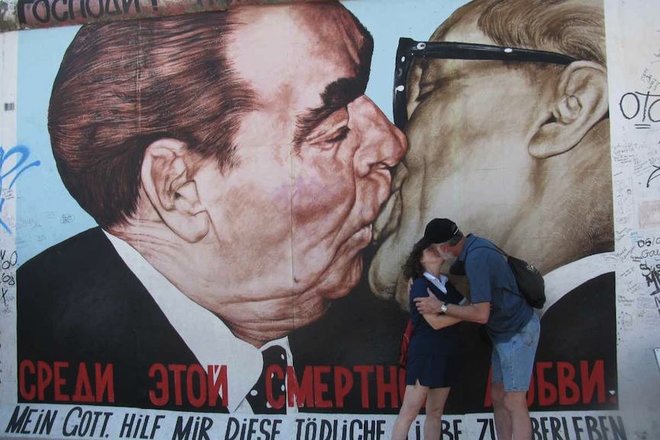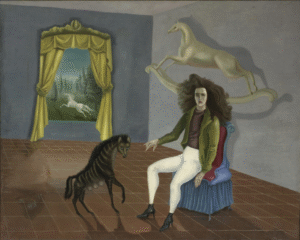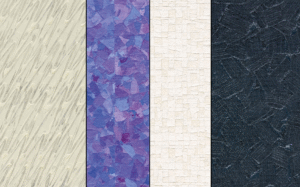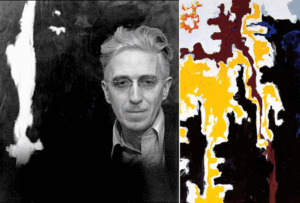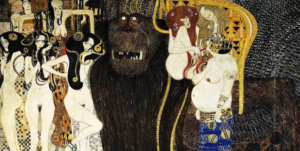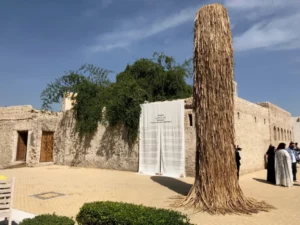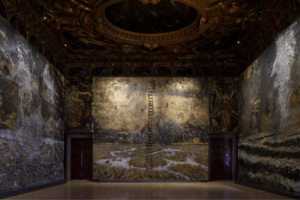Ever since Plato and Aristotle, the act of artistic creation became inseparable from the idea of the real world. Employing common sense as one of the main tools of a variety of aesthetic observation only seems logical as every art is political, given it takes place in society we live in. It influences or is influenced by people, which impulsively makes it a tool of societal or political expression, whether affirmative or critique-like. Such as the story of the Cuban artist Tania Brugeura we shared before. However, not every artist agrees with this stance. For instance, Edgar Allan Poe declared: “… would we but permit ourselves to look into our own souls we should immediately there discover that under the sun there neither exists nor can exist any work more thoroughly dignified, more supremely noble, than this very poem, this poem per se, this poem which is a poem and nothing more, this poem written solely for the poem’s sake.” For some of the artists of the early 19th century, real art is divorced from any didactic, moral, or utilitarian function.
Above all, a modern view gives another perspective: A work of art without measurable contribution to society would seem meaningless. It is expected of any and every piece of art to be elevating, meaningful and somewhat constructive, especially in the world where shrewdness and commercialism have prevailed. Nevertheless, drawing the line between art and politics, and trying to set rules somewhere where they are, possibly, not meant to be established is tough, and very individual. But, that’s why we love art – almost everything about it can be subject to personal reflection and observation, emotion and coincidence, a moment in time.

Addressing Issues Through Art
Let’s take a look into the general, decades-long artistic dynamics, and the art that followed.
Artists have always drawn inspirations from the world around them. The outcome of their efforts can be more or less connected to certain reality. Depending on the idea, some works can speak more directly and loudly, while others can be subtler and more difficult to comprehend. An artist’s creation possesses undeniable cultural power; if he/she manages to convey the message through their art, spectators will end up focusing on what’s before them with their entire being, and understand the piece in all its political (in)correctness at their disposal. With such a substantial responsibility, artist is often expected to be a step ahead – both the current and political climate and their potential spectator’s.
Art shapes our perception with artists skillfully putting creations of everyday life under the magnifying glass for us to view. They turn our attention from superficial, consumerism-prone and shallow instant pleasures, to what matters to our collective conscience: poverty, war, human rights, to corruption, misery, and deterioration of human psyche due to dispirited societal circumstances. When an artist is moved, their inner being reflects an unstoppable impulse to share his impressions. As Nina Simone, an American singer-songwriter and Civil Rights activist, once said: ”How can you be an artist and not reflect times?”
Not all artistic, political engagement is created on impulse. Some of it can be intentional, and purposeful with the purpose of observing and communicating the current situation, then creating pieces the new generations will use as a tool to understand political contexts they weren’t born into. Ways of reaching the political engagement are many; with so many artistic interventions available, artists have the liberty to express themselves using bare gestures, but also complex concepts that can result genuine political changes. However, there is often a fine line between art staying within its artistic concept and turning into a civic or political action.

The Freedom, the Mystery, the Exhilaration
On the other hand, the principles of aesthetics speak for themselves: for many people, Art has to be free. Not to be weighted with speech, tutelage or discipline that cannot be readily explained or understood. For those people, Art needs to be magical, providing magical escapism to represent and elevate human imagination. Henri Matisse once declared that he dreamt of an artwork “devoid of troubling or depressing subject matter … a soothing, calming influence on the mind, rather like a good armchair” which brings us to this question: Do we actually want art to challenge ourselves with the conflicts and threats we encounter in the news every day? Having this in mind, it makes much more sense to gravitate toward art, not for politics or protest, but for the comfort, pleasure, and excitement. We could have it help us fight through the unstable and often threatening world. Widely popular Yayoi Kusama’s traveling retrospective exhibitions proves us that great many people long for an opportunity to wonder in trippy, brightly-colored immersive environments quite aimlessly. What we are to do is sit back, lose ourselves and admire universes and dimensions that are beyond reason and context as one wonders gleefully in Kusama’s infinity land. Ultimately, esthetics of her art make us believe that art is extraordinary and mysterious.
The Desire for Logic and Purpose
Meanwhile, with an expansion of liberal point of view and development of technology, a modern attitude towards art has emerged. As a literary critic, Lionel Thrilling stated in his collection of essays “Liberal imagination”: “Vision of a general enlargement and freedom and rational direction of human life… drifts towards a denial of the emotions and the imagination.” Art itself, with its emotionalism, and its unabashed assertion of the phantasy has adopted the tendency to celebrate purposefulness. An artist has become a pivotal part of his creation, and his work is often viewed through his beliefs, philosophy, and standpoint on the world and ongoing matters. It appears that, for a liberal critic, it is necessary for the human failings of the artist to be linked to artistic weaknesses, and the human must explain the aesthetic.
Additionally, technology has brought the artists as people closer to us than ever, thus allowing us to judge their work based on their personality. These circumstances have simultaneously impacted the perception of all art that has ever been created. At the same time, they have linked art and politics by putting them in a state of mutual dependence. A state that seems to be unalterable.

No Answer is a Wholly Correct One
At the very end, it would take an incredible effort to separate art from politics, rather impossible, even. Is it, then, safe to conclude that the idea of eliminating any connection between art and politics is merely artless attempt since the true meaning of art is somewhere else? Maybe, maybe not. As knowingly observe, we are to presume, although rarely fully understand, we continue to reflect and fully admire the line and space in between.
Great art has through time been created in a countless number of ways. It has been made as a protest and propaganda, made to disturb and sooth; it made the creator and us alike, to question and to express. And, no matter which shape it took, it always succeeded in its beauty, excellence, and unpredictability. Artists have been impacted by past and present and have dictated the course of future and our perception of it. At the same time, our increasingly globalized and media-driven world has brought us closer to people’s struggles inasmuch as bringing those stories of beauty, and survival closer.
Saying art is driven by a single exceptional agenda is naïve, and somewhat shallow. Art is a supreme form of expression with roots deep into the artist’s psyche, emotion, his and her observation; it offers us an opportunity and understanding of objects and ideas that are worthy of reflection and musing. As long as there is magic, excitement, mystery, and our collective drive for acceptance and understanding, there will be art to celebrate our limitations.

